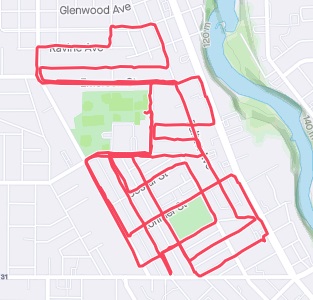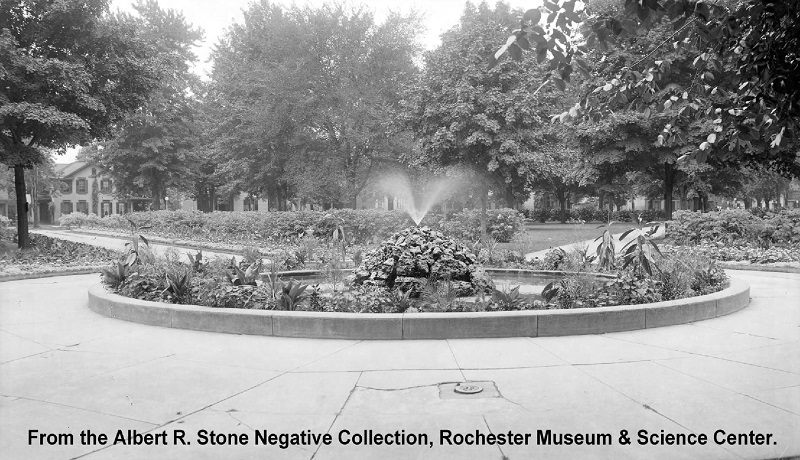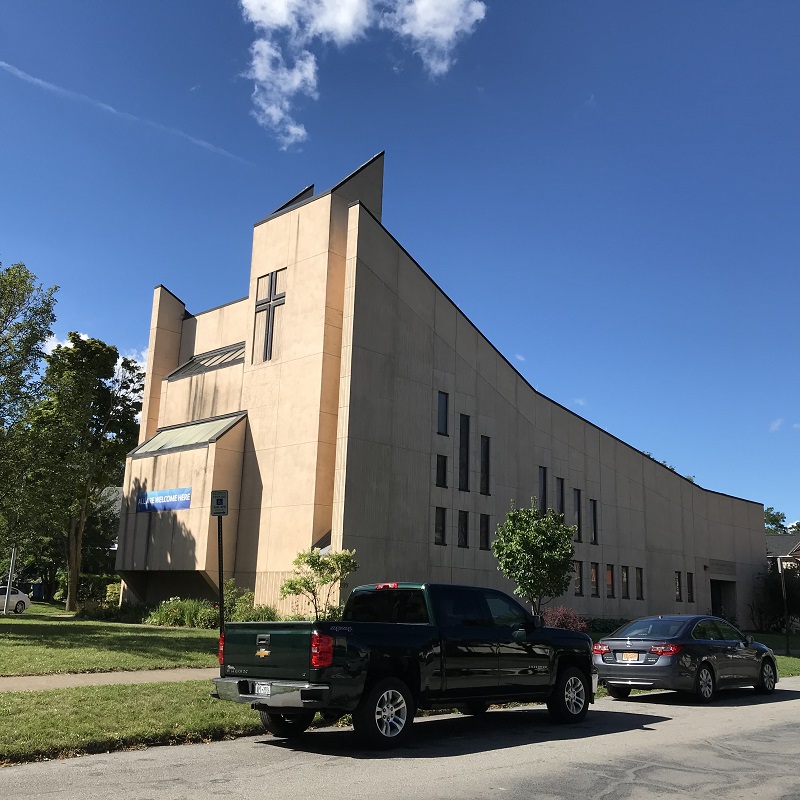Emerson, Lake & Lyell: the Edgerton neighborhood

Year Incorporated: 1834
Ward: 9 & 10
Population: 7609
Fun fact: Hosted the first pro basketball game to feature a Black athlete.[/su_box]
Immediately north of Brown Square is the noteworthy but unassuming neighborhood of Edgerton. Originally called the Jones Tract, this neighborhood used to be waterfront property, being bounded on the west by the Erie Canal (running parallel to Dewey Ave, or West Street back then). Home to a rec center with a historic O-scale model train club, Upstate Niagara dairy farm co-op, Jones Park, Edgerton Park and Rec Center, various churches, bodegas, and other businesses, the area struggles where once it shined. However, reminders of its glory days still remain. From its two landmark parks, to its architecture or places of worship, Edgerton is both a reminder of what we gave up and what we could become.

Jones Square park, opened in 1837, became a popular destination for recreation within the city. Later re-designed by famed parchitect* Frederick Law Olmstead, it was utilized for a wide variety of activities. In 1861 the 13th volunteer Infantry regiment, under Capt. Robert Taylor’s direction, barracked at the old Public School no. 6 on Lyell (where Key Bank is now) and practiced drills in Jones Square before shipping out to Washington via Elmira. (If any Key Bank employees would like to report ghost activity to me I’ll keep it anonymous!) After the Civil War the park became the spot for baseball in Rochester, at least until audiences overflowed the confines of the square and the city had to find bigger, better facilities elsewhere.


Lake Avenue Baptist Church has been a fixture in the neighborhood since 1871, and has a fascinating history. It was, in a way, the birthplace of WHEC-TV (now channel 10). It took an active role in organizing the resistance during the local race revolution of the 1960s. Perhaps the most tragic event in their history was the fire of 1972.
The real jewel of Edgerton, and top contender for “best Rochester architecture to be torn down” is the old Exposition campus, which itself was the State Industrial School for naughty children from 1846-1907. In 1911 Mayor Edgerton saw a need for space akin to the Dome Arena or the Blue Cross Arena, so the old facilities were re-imagined as a zoo, library, museum, sports arena, festival site, concert hall, and more. It was here that, on Halloween day in 1950, history was made. Black athletes are ubiquitous in basketball now, but the game between the Washington Capitols and the Rochester Royals was the first-ever NBA game to feature a Black player when Earl Lloyd walked out on to the court. Unsurprisingly the event wasn’t widely celebrated on local media.

There’s a modern-day tendency to look at old municipal buildings through a preservation lens, and I wish this were the case after WWII but it wasn’t so. The success of the Exposition park relied on a few things, and as I write this I have to pause and reflect on the parallels we’re seeing in post-Pandemic 2020. The post-war capitalist boom favored cars, and part of the allure of the park was it’s easy access via the Subway. Now families could go visit the multitude of zoos, auto shows, and libraries that were within driving distance. The nail in the coffin, I suppose, was the construction of the War Memorial in the ’50s. Rochester, like the rest of the U.S.A. wanted bigger and better. Now, only building 2 remains.
Because I’m chronicling my pedestrian adventures through the city, I have to talk about the whole neighborhood as it is now, not just the highlights of what once was. I started on bike from the Edgerton R-Center parking lot, cut down Bloss to Dewey and wormed my way back and forth on the side streets. I had to cut my ride short a bit because of the construction on Lyell; navigating busy traffic between road cones is a recipe for disaster on 2 wheels. At least a few times I caught myself muttering to myself under my mask, “good bones”. I’m a lover of good architecture no matter what condition it’s in, and the gorgeous Queen Annes and folk Victorians mingle with ordinary Colonial and Greek revivals; turrets and mansard roofs punctuate the skyline between roofs that science dictates should not still be upright. There is a distinct difference between “good bones” and a boneyard, and Edgerton might often be considered the latter, but I see promise. As with any zone within city limits, we are doomed to live with the curse of blight so long as we accept it; the minute we truly admonish the forces of capitalism and learn to lift everyone I believe this neighborhood will be ripe for a renaissance.
*If “Parchitect” catches on I assume all credit for coining the term. Of course I use it without googling it first, so apologies to anyone who was clever enough to utilize it before me.

Man I didn’t know about Exposition Park! My final grad school paper was on community economic development with Edgerton specifically as a ‘case study’. Fond feelings for the area.